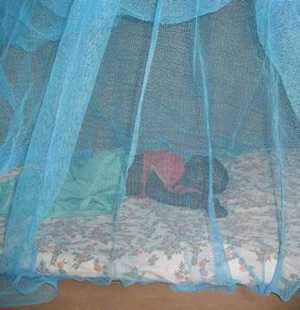How Can I Help?
CDC receives calls and e-mails from individuals asking how they can help make a difference in the fight against malaria. Many want to donate money to buy insecticide-treated bed nets for people who cannot afford them.
In the past few years, many new organizations have started to address the need for more funds for malaria control.
We list a few here for information purposes and for your convenience only, with the understanding that the listing of an institution or organization on this web site does not confer any official status, approval, or endorsement of the institution or organization itself. Any contributions you choose to make to organizations listed on this Web site are at your sole discretion.
Many organizations raise money for nets, including
If you work for a company that does business in an area with malaria, you could include malaria control in your business strategy. Several companies have done so, including Exxon-Mobil and Ashanti Gold.
If you work for a company and are looking for a good cause for a special event or holiday fund raising, you could consider raising money to buy insecticide-treated nets.
If you live in a malaria-endemic country, help make malaria control and prevention a priority, and make sure you protect yourself, your family, and your community.
Malaria is considered a disease of poverty. Efforts that aim to create healthier, more productive lives for people living in poor malaria-endemic areas also help fight malaria.
Insecticide-Treated Nets Save Lives

Insecticide-treated bed nets (ITNs) have been shown to work, both in studies in communities and in actual use. In several studies in Africa, ITNs reduced the number of deaths from all causes in young children by about 20%. ITNs are considered an important part of malaria prevention. In the last few years, the number of people in Africa who own and use an ITN has rapidly gone up. Several countries have seen that when they increase coverage with these interventions (ITNs, effective antimalarial treatment, intermittent treatment for pregnant women, indoor residual spraying) malaria rates drop significantly. For example, between 2005 and 2007 in Zanzibar, after a rapid increase in the use of ITNs, spraying, and providing effective antimalarial treatments, the number of malaria cases in children under 2 years of age attending health clinics fell from 22 percent to less than one percent.
How do insecticide-treated nets work?
People sleep under ITNs during the time when the mosquitoes that spread malaria like to feed. The insecticide on the nets helps reduce the numbers of mosquitoes that enter the house and works to kill the ones that do enter. In this way, the ITN protects the person or people sleeping under the net. If large numbers of people in the community sleep under an ITN, the numbers of mosquitoes, as well as their lifespan, will be reduced. When this happens, all members of the community receive some protection, whether or not they own or use an ITN.
The President’s Malaria Initiative site and Roll Back Malaria’s World Malaria Day site also suggest how individuals and groups can help.
- Page last reviewed: November 9, 2012 (archived document)
- Content source:


 ShareCompartir
ShareCompartir